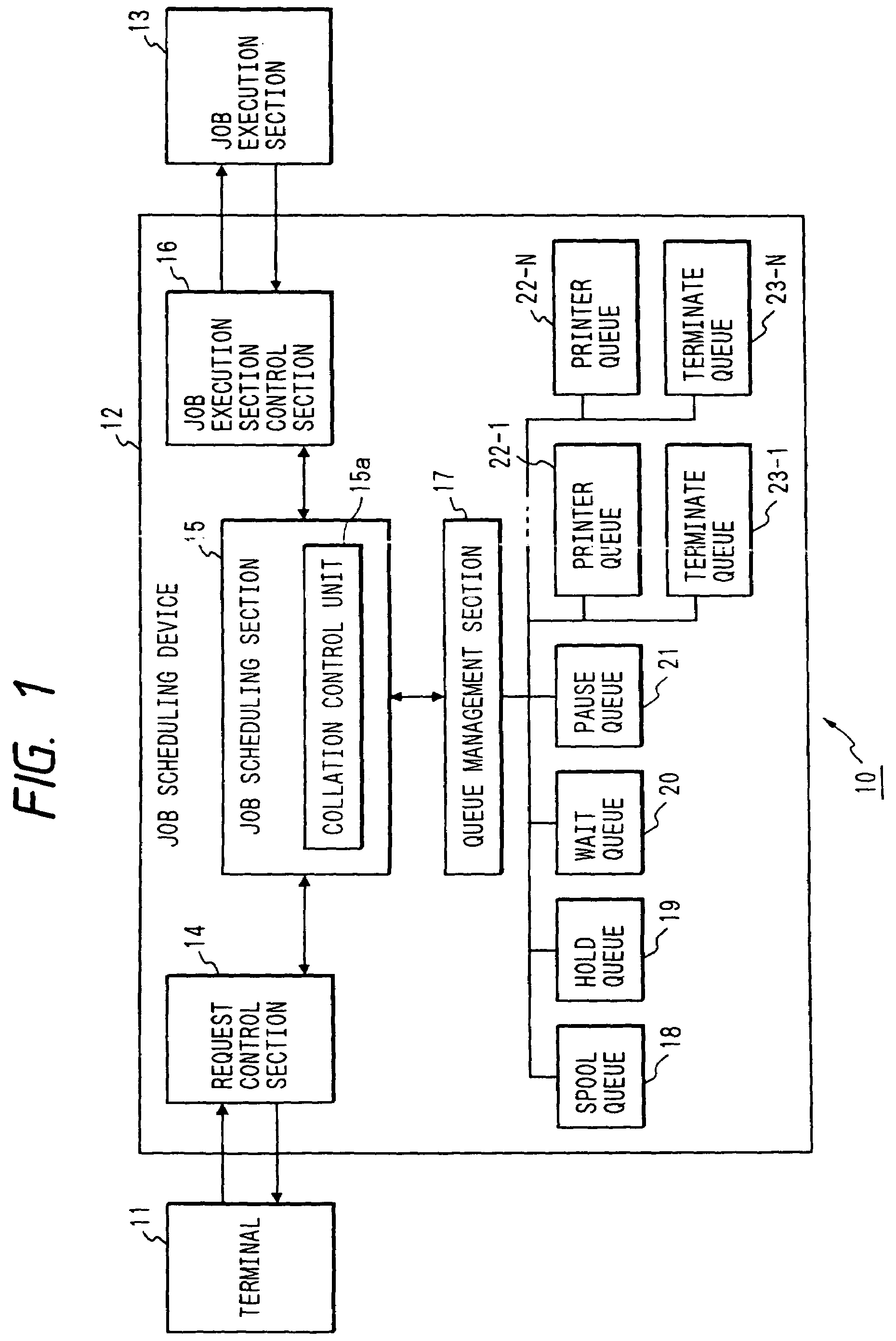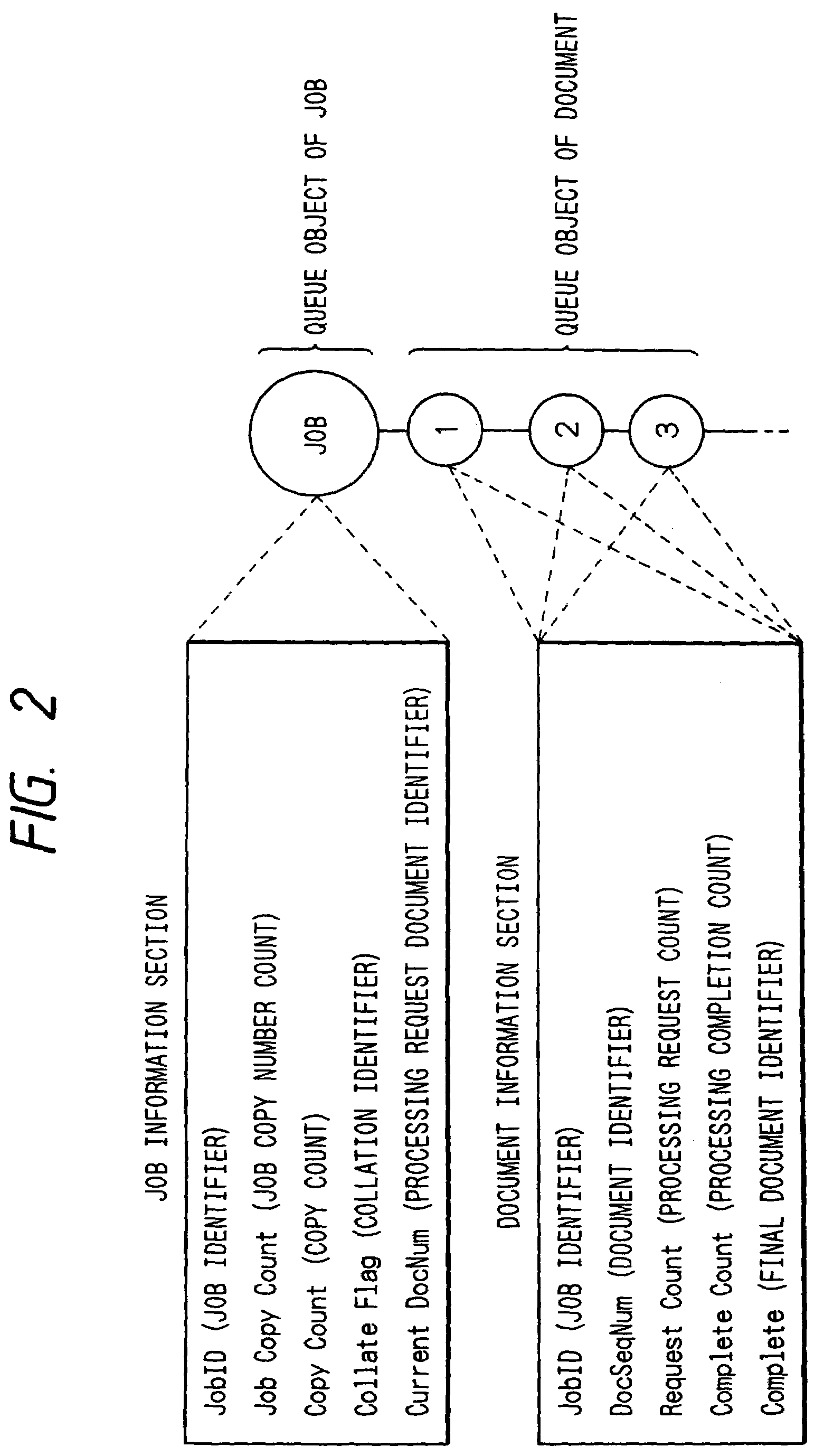Job scheduling system for print processing
a scheduling system and print processing technology, applied in the field of job scheduling system, can solve the problems of increasing the burden on a memory device such as a disk, poor processing efficiency, and taking a long time for users to distinguish the output results of users from other problems
- Summary
- Abstract
- Description
- Claims
- Application Information
AI Technical Summary
Benefits of technology
Problems solved by technology
Method used
Image
Examples
first embodiment
[0172]As described above, according to the present invention, information representing the availability of collation is added to a job request issued from a terminal equipment. If a received job has the designation of collation, the job scheduling device controls a processing request issued to the job execution section in such a way that only a specified number of this job is output in a collated manner. On the other hand, if the received job has the designation of uncollation, the job scheduling device controls the processing request issued to the job execution section in such a way that only a specified number of this job is output in an uncollated manner. By virtue of such a configuration, it is possible to output a plurality of jobs having the same contents by the issue of one job request.
[0173]According to this embodiment, output results related to a plurality of job requests are not mixed with output results related to job requests of another user, and hence it becomes possibl...
second embodiment
[0178]In the second embodiment, the terminal 11 adds an undesignated identifier to the leading document among a plurality of documents previously prepared in this terminal. A job identifier delivered to the leading document from the job scheduling device 12 is added to the second and later documents, and the information which represents the end of the plurality of documents is added to the final document. Then, the plurality of documents are sent, and a processing start wait, a processing completion wait, and a password input wait are respectively set to the leading document of the plurality of documents. Further, message information may be set in accordance with the setting of the processing start wait, the processing completion wait, and the password input wait.
[0179]During the processing start wait, it is checked whether or not the document is set to a processing start wait when the processing of the job is started. If the document is set to the processing start wait, the process...
third embodiment
[0257]A print processing system according to the present invention will now be described with reference to FIGS. 22 to 25. The print processing system of this embodiment searches for a document which needs the conversion of a format by searching through jobs stored in a queue and converts the format of the job prior to print processing, when the format conversion facility becomes available.
[0258]FIG. 23 is a block diagram schematically showing a print processing system 110 according to this embodiment. The print processing system shown in FIG. 23 is made up of a plurality of job acceptance sections 101, a server management section 102, a job control section 103, job execution sections 104, and an object management section 105.
[0259]The job acceptance section 101 accepts a job request from a terminal connected to a network (not shown) in compliance with a network protocol, and outputs a job request relating to that job to the job output section 103. The server management section 102 ...
PUM
 Login to View More
Login to View More Abstract
Description
Claims
Application Information
 Login to View More
Login to View More - R&D
- Intellectual Property
- Life Sciences
- Materials
- Tech Scout
- Unparalleled Data Quality
- Higher Quality Content
- 60% Fewer Hallucinations
Browse by: Latest US Patents, China's latest patents, Technical Efficacy Thesaurus, Application Domain, Technology Topic, Popular Technical Reports.
© 2025 PatSnap. All rights reserved.Legal|Privacy policy|Modern Slavery Act Transparency Statement|Sitemap|About US| Contact US: help@patsnap.com



